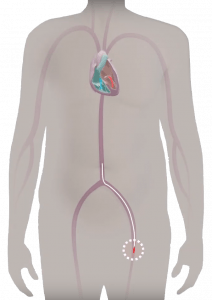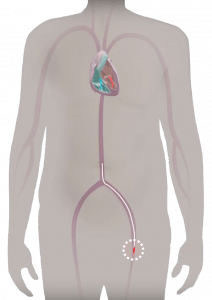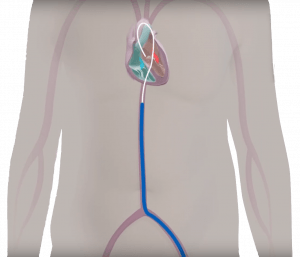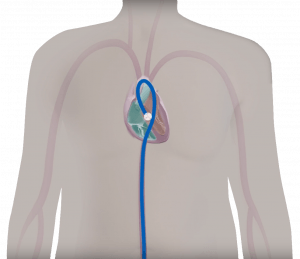TAVI: Transcatheter aortic valve implantation
A therapy for severe aortic stenosis
You may feel overwhelmed if you have been recently diagnosed with severe aortic stenosis and this can make it harder to take the step toward treatment. But the sooner you seek care, the quicker you will be able to get back to life and all the things you love.
TAVI, also called TAVR (transcatheter aortic valve replacement), is a treatment option for severe aortic stenosis, that is designed to replace a diseased aortic valve through a catheter.
A doctor can explain the procedure to you and determine if TAVI is right for you.
What happens during TAVI?
Your doctor will perform the procedure at a hospital. Depending on your health, they will determine what type of anaesthesia is best for you. You may be fully asleep, or you may be awake but given medication to help you relax and block pain. Your heart will continue to beat during the procedure. This is quite different to open heart surgery, in which your heart will be stopped, and you will be placed on a heart and lung blood machine .
TAVI is different from open heart surgery in that it uses a different approach to treat a diseased aortic valve. Your doctor will determine the best approach for replacing your valve, but the most common technique involves a small incision made in the leg. This is called the transfemoral approach.
TAVI procedure: step-by-step1
TAVI procedure: step-by-step1
Step 1 of 4
A small incision is made in your upper leg. This is where your doctor will insert a short, hollow tube called a sheath into your femoral artery.
The new valve is then placed on the delivery system (or tube). The new valve is compressed to make it small enough to fit through the sheath.
Your doctor may decide that a different approach is necessary depending on various factors. Other ways to perform the TAVI procedure include:
- Transapical approach: Through an incision in the chest between the ribs.
- Transaortic approach: Through an incision in the upper chest.
People may feel relief from their symptoms soon after their TAVI procedure, but others may take a little longer to get back to normal. Talk to your doctor about how long your recovery may take.
Serious complications, sometimes leading to death, may be associated with TAVI. Other risks include stroke, vascular complications, and a life-threatening bleeding event.
Any medical procedure carries risks. You should obtain advice from your doctor as to your condition and appropriate treatment options. Before proceeding, you should seek an evaluation from an appropriately qualified health practitioner on a Heart Team.
Learn more about open heart surgery.
Join Email list
Sign up todayTalk with your doctor
Get the guide
“TAVI.” Heart Treatments – British Heart Foundation, www.bhf.org.uk/informationsupport/treatments/tavi.



